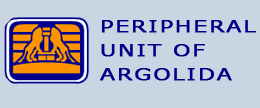The Monastery of St.Demetrios “Karakalas” (Ag. Andrianos)
|
The Monastery, built really close to the region of "Agios Andrianos" and at the foot of the mountainous village of "Arachnaio" was also called "Xsirokasteli" (stressing the –ste-syllable), yet rarely has it been used by the locals. Now, the "Karakalas" term or nickname has been translated by the Turkish word of "Kurukule". The corruption of the word by the locals has brought it to its present sound. This explanation, among others, seems to be the most plausible, regarding the root of the name. |
||
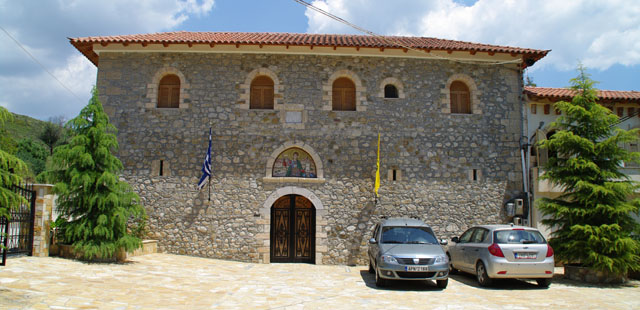 |
||
|
There is no exact date of the erection of the Monastery, though since 1696 there is a description of its massive property. This is probably the theory towards the assumption that the nunnery was up and running for centuries. |
||
|
During the wage to reclaim the town of Nafplio from the Turks, the nunnery stepped in actively, supplying the rebellious cause with weaponry. Records point to the fact that the sanctuary was run by a Father Superior (Dionysios), six monks and fifteen (15) wage earners in 1829.
The present day "Vouleutiko" building (Old Parliamentary House) is said to have been the place where the Turks erected their "temenos" (place of worship) out of the preserved material left, after the nunnery sustained huge fire damage at the beginning of the 19th century. |
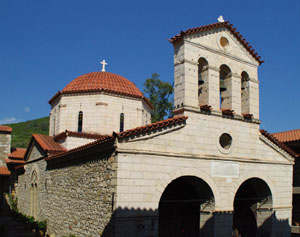 |
|
|
In 1928, the Monastery was expropriated and was divided to local shepherds, to have their livestock graze. "Karakalas" Monastery also suffered two merges, one in 1934 with the Monastery "Talantiou" and the other one two years later, in 1936, with the "Agnountos" and "Michael and Gabriel" Nunneries. Unfortunately, the German forces set the church ablaze in 1943 and blow up one of its compartments, during the German Invasion, WWII. It was in 1963 that it became a MOnastery and commenced a new period of affluence. |
||
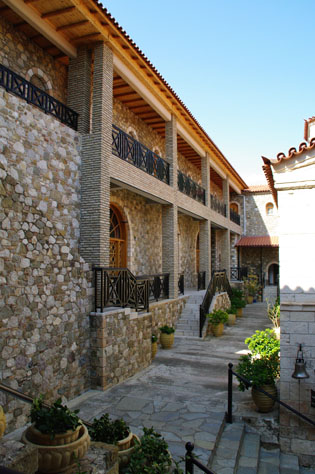 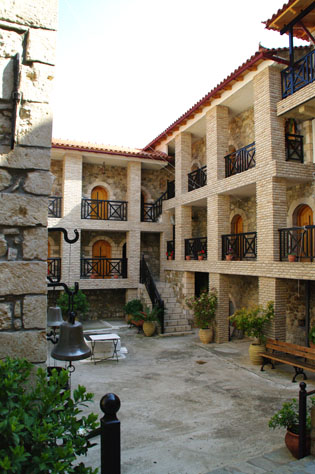 |
||
|
|
||
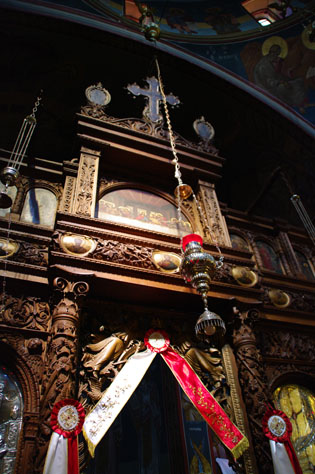 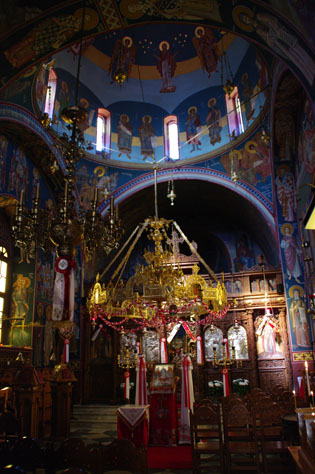 |
||
|
The center of the Abbey glows in its "Katholikon" with the measurements 19 x 8m, being rebuilt in 1871. The "Katholikon" is characterized architecturally as a registered cruciform domed one. The curve of the arches is followed by a tiled decoration. The interior mural painting is a courtesy of X.Voulgaris. Striking awe awaits the visitor who observes the wood-curved iconostasis and the 18th-19th century icons exhibiting Virgin Mary and St. Demetrios.
Currently (2011), the nuns, under the guidance of Mother Superior or abbess, seek to retain the strength and face of the Monastery. |
||
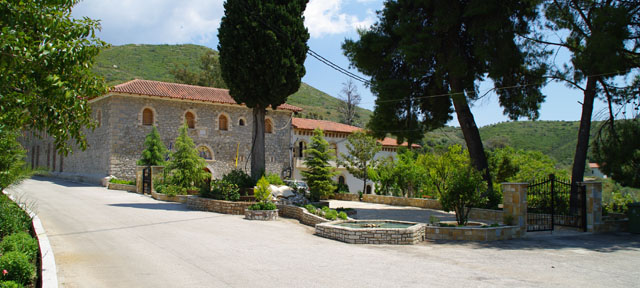 |
||
| The exact location of the Holy Church can be tracked in the section: Map | ||



